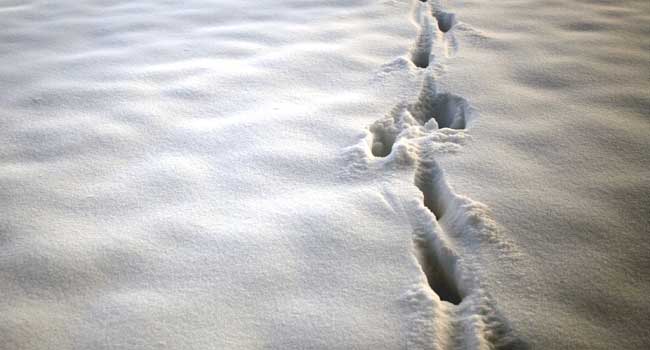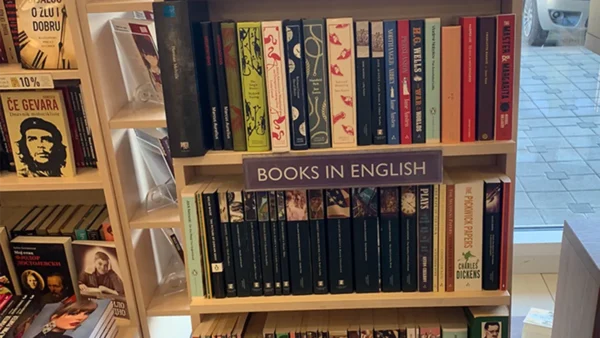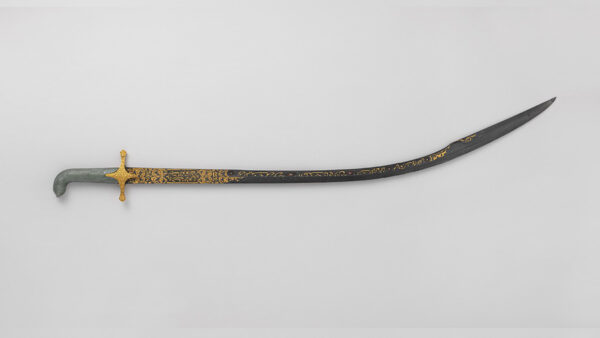The darkness looming over the Scandinavian Countries has crossed the sea and reached Great Britain and the US. With shows such as The Killing and The Bridge reaching international success and Borgen winning a BAFTA award, New Danish Drama has never been more popular in the English speaking world.
 My guest today is Lea Elm, a bookworm and literature geek who is studying Comparative Literature at the University of Southern Denmark. Lea is in love with words, and when she’s not turning inner pictures into words, she turns stories into photographs. She tweets as @AllThingsEla and her website is LeaElm.com.
My guest today is Lea Elm, a bookworm and literature geek who is studying Comparative Literature at the University of Southern Denmark. Lea is in love with words, and when she’s not turning inner pictures into words, she turns stories into photographs. She tweets as @AllThingsEla and her website is LeaElm.com.
The darkness looming over the Scandinavian Countries has crossed the sea and reached Great Britain and the US. With shows such as The Killing and The Bridge reaching international success and Borgen winning a BAFTA award, New Danish Drama has never been more popular in the English speaking world. Popular crime novels from authors such as Stieg Larsson and Jo Nesbo have become bestsellers in both their own countries and translated in the UK, making Contemporary Scandinavian Literature cooler than ever before. The Killing has even been adapted from screenplay to book, just for the UK!
This popularity for Nordic Noir and crime novels has meant that more Scandinavian writers have been translated to English than what is usually the norm. There is even a whole page on Waterstones’ website dedicated to “Great Crime reads from Scandinavia”.
 I don’t know what it is that makes Nordic Noir so alluring to everyone, both in the Scandinavian countries and in the UK. Some articles claim it to be our climate, the long, cold winters or the melancholy feel that penetrates everything, even on the sunniest days in June. Maybe it’s simply the exciting thrill of a murder investigation and nothing more.
I don’t know what it is that makes Nordic Noir so alluring to everyone, both in the Scandinavian countries and in the UK. Some articles claim it to be our climate, the long, cold winters or the melancholy feel that penetrates everything, even on the sunniest days in June. Maybe it’s simply the exciting thrill of a murder investigation and nothing more.
But there is more to Scandinavian literature than crime novels, more than the thrill of unexpected events that takes us away from dull everyday life. Actually, there is a long tradition in the Scandinavian literature that focuses on just that: On a description of someone putting butter on a slice of bread and eating it, sitting on a chair, looking outside of the window on a slow Sunday afternoon where nothing happens. And knowing that nothing will happen.
That is the plot, if you can even call it so, both from the tradition of earlier works and in contemporary fiction. Scandinavian short stories and novels have a long history and tradition of working with realism. There is a lack of action and in many stories, a lack of moving forward. Everything stands still and nothing moves in a poetic silence as quiet as walking on snow.
A lot of Scandinavian writers these days are writing autofiction, a fictionalized and staged autobiography where the borders between fiction and lived lives disappear and merge together so you can’t tell them apart. And in Denmark a new generation of young authors are writing about the experiences of the body, with a focus on pain and the body being portrayed as something that can be abused by disease or humans.
My own favorite contemporary Scandinavian authors are the Danish writers Josefine Klougart and Helle Helle, and Norwegian Kjell Askildsen. They all deal with everyday life and situations. Josefine Klougart writes a very poetic, almost lyrical autofiction that focuses on her own family and is inspired by the wet, cold and dark Nordic landscape she grew up with, with rainy hills and dark green forests. She also writes about a sense of belonging to a place, the importance of it and the fear of one day not belonging to it anymore. She writes about the landscape that surrounds you as something belonging within yourself, as being a part of who you are.
Helle Helle and Kjell Askildsen are more alike, the former being inspired by Askildsen who belongs to an older generation of writers. They are known as “minimalists”, writing in a short, easy and precise language that puts even Hemingway to shame. Every singly word used in their stories have been cut to the bone, here you wont find any unnecessary adjectives or overly detailed descriptions. They both write about ordinary people who go about in their daily business, with long scenes where nothing much happens on the surface. The few words being written are hiding the subtlest of tragedies behind them. Their stories are also about people who never gets anywhere and who are stuck in their own lack of progress. They write in a sad and melancholy style that reminds you of those rainy Sundays where you are waiting for something, anything. But when you read Kjell Askildsen and Helle Helle, you will know that their characters are waiting in vain, nothing will change for them.
So the Nordic noir and the quiet melancholy is not just happening in the crime sections of the bookstores but is also being portrayed in the stories within the realism genre.
As a Danish person I am a bit biased. I have tried to find authors to write about that were both Danish and translated but have sadly discovered that even though Danish writers are being translated, it is often into German, Swedish or Spanish and not into English. Apart from the popular crime fiction, not many other Danish works are hitting the English shelves. And since I’m biased, this saddens me quite a lot.
Contemporary Scandinavian literature is so much more than the works of crime authors. Hopefully the popularity of Scandinavian crime will with time lead to other works being translated as well, but for now there is a limit in the popularity. I would have loved to spread the word and tell you, go read those authors! But unless you know Danish or Spanish, it’s not likely.




There are 8 comments
I enjoyed this post. I like hearing what’s coming out of other cultures, in terms of books, versus what is coming out within the same countries and what they’re reading there. You give a lot of good information.
I’ve been reading Hamlet along with some secondary sources and, of course, that comes from the Danish tradition, originally. I wonder how Danes feel toward that whole debacle. Do they like the fact that their popular legend made it across the world or do they feel Shakespeare took something from them? Possibly, they’re also tired of answering this question!
Thanks for the great post.
I have to admit that I haven’t read Hamlet yet, a huge flaw in my literary education. For some reason I haven’t been met with it in my A levels or at University yet and it makes me wonder if the teachers avoid that specific book conciously. And in that case, why?
Is it too “obvious” too use?
I think in general that us Danes (me included) are very proud that someone as great as Shakespeare has bothered to write about something related to Denmark, and people love Kronborg castle (Elsinore) because it is involved with another Danish myth much more important to the history of Denmark than Hamlet.
I don’t think any of us feels that he stole our myth on Hamlet, we don’t feel robbed but very proud when new interpretations of the play is being set up, both in Denmark and in other countries. But I also have to say that the way Shakespeare’s Hamlet is written is very different from scandinavian storytelling (like that of Saxo), so although we feel connected to that play more than any other by Shakespeare, it doesn’t really feel like “our Shakespeare play” either.
And I don’t think Danes ever get tired of answering any questions that put some light on our small country. We like to be noticed.
Thanks for taking the time to respond. It’s worth a read for sure so hopefully you will encounter it at some point.
Is the other myth you mention the Holger the Dane myth or another?
That makes perfect sense about it not feeling like “your play” and maybe it is a bit presumptuous for me to assume it is even a part of your country’s literary tradition. I just couldn’t resist the question!
It was exactly the Holger the Dane myth that I was refering to. He belongs to Kronborg just as much as he belongs to Denmark.
I think that in our mind’s it is a part of Denmark and danish culture, because of the plays being set up at for example Kronborg but it is not a part of the Danish literary tradition, because of the obvious reasons such as the language and the lesser obvious reason which is that the play is still very much “british”.
That said I think it’s weird that we dont read Hamlet in school more often, instead of coming across Romeo & Juliet, & Macbeth many times during GCSEs, A-levels and University. Surely Hamlet is more relevant to Danish people and it would be interesting to compare the Hamlet myth of Saxo with Shakespeares play.
“…a sense of belonging to a place, the importance of it and the fear of one day not belonging to it anymore. She writes about the landscape that surrounds you as something belonging within yourself, as being a part of who you are.” I must check out Josefine Klougart.
Hi Martin!
Josefine Klougart is one of my new favorites after I read her debut book. I just started reading her latest (and third) two days ago which is written even more beautifully. She uses her lyrical prose to depict the connection between childhood landscape and the sorrow of changes in life, like the kind of changes that appear within someone after a relationship breakup. The language is so pure, it is like her words are coming from the roots of the danish language itself. Very very special writing.
She is still pretty new but I hope she will get more and more translated so I can recommend her books to more people.
I really like your blog.. very nice colors & theme. Did you create this website yourself or did you hire someone to do it for you? Plz reply as I’m looking to design my own blog and would like to find out where u got this from. kudos
Thanks! I designed it myself, using a WordPress theme from Woothemes.